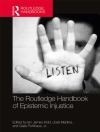This volume presents key contributions to the study of ecocriticism in Nordic children’s and YA literary and cultural texts, in dialogue with international classics. It investigates the extent to which texts for children and young adults reflect current environmental concerns. The chapters are grouped into five thematic areas: Ethics and Aesthetics, Landscape, Vegetal, Animal, and Human, and together they explore Nordic representations and a Nordic conception, or feeling, of nature. The textual analyses are complemented with the lived experiences of outdoor learning practices in preschools and schools captured through children’s own statements. The volume highlights the growing influence of posthumanist theory and the continuing traces of anthropocentric concerns within contemporary children’s literature and culture, and a non-dualistic understanding of nature-culture interaction is reflected in the conceptual tool of the volume: The Nature in Culture Matrix.
Tabla de materias
1. Introduction.- 2. Nature and Becoming in a Picturebook about “things that are”; Marianne Røskeland.- 3. Aesthetic appreciation in nature and literature; Gunnar Karlsen.- 4. Children’s Literature as Exercise in Ecological Thinking; Nina Goga.- 5. The Nordic Winter Pastoral: A Heritage of Romanticism; Aslaug Nyrnes.- 6. Unrest in natural landscapes; Ahmed Khateeb.- 7. From wilderness through mediation towards rewilding. The negotiations of the jungle discourse in
Black Ivory and
The Cry from the Jungle; Kristin Ørjasæter.- 8. Plant-Human Hybridity in the Story World of Kubbe; Lykke Guanio-Uluru.- 9. Poetic Constructions of Nature. The Forest in Recent Visual Poetry for Children; Anna Karlskov Skyggebjerg.- 10. Ecological settings in text and pictures; Kaisu Rättyä.- 11. Marine Animals in Ted Hughes’s Poetry for Children: Ecocritical Readings of Four Illustrated Poems; Berit W. Bjørlo.- 12. The representation of ants in Catalan contemporary poetry for children; Maria Pujol-Valls.- 13. “Who will save us from the rabbits?” – problematizing nature in the Anthropocene; Hege Emma Rimmereide.- 14. The Wild Child: Posthumanism and the Child-Animal Figure; Kerry Mallan.- 15. The Wilderness Children: Arctic Adventures, Gender and Eco-cultural Criticism; Kirsti Pedersen Gurholt.- 16. “We are all nature” – young children’s statements about nature; Bjørg Oddrun Hallås and Marianne Presthus Heggen.- 17. Landscapes and mindscapes in two picturebook apps; Ture Schwebs.
Sobre el autor
Nina Goga is Professor in Children’s Literature at Western Norway University of Applied Sciences, Norway. She is leader of the research group Nature in Children’s Literature and Culture and co-editor of
Maps and Mapping in Children’s Literature:
Landscapes, seascapes and cityscapes (2017) with Bettina Kümmerling-Meibauer.
Lykke Guanio-Uluru is Associate Professor in YA Literature at Western Norway University of Applied Sciences, Norway, where she researches literature and ethics with a particular focus on fantasy, the posthuman, and digital games. She is the author of
Ethics and Form in Fantasy Literature: Tolkien, Rowling and Meyer (2015).
Bjørg Oddrun Hallås is Professor in Physical Education at Western Norway University of Applied Sciences, Norway, and co-editor of
Natur og Danning (2015) with Gunnar Karlsen.
Aslaug Nyrnes is Professor in Didactics of Literature and Fine Arts at Western Norway University of Applied Sciences, Norway, and Professor II in the Faculty of Fine Art, Music and Design at the University of Bergen.












